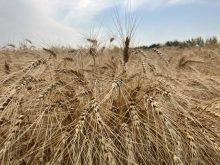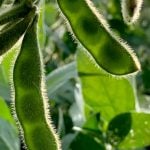MarketsFarm — Feed grain prices have softened across the Prairies, as seeding is well under and many producers have the coverage they need until new crops begin to come off the field in August.
Markets are fundamentally bearish right now, as farmers with enough coverage can wait until prices get even lower when new crop comes to market.
Seeded barley acres across Western Canada are expected to be 10-15 per cent higher in 2019, contributing to a supply glut come harvest season, which will lower prices further.
Read Also

U.S. grains: Soybean futures set two-week high on US weather worry, soyoil rally
Chicago Board of Trade soybean futures touched a two-week high on Friday on worries that heat may threaten U.S. crops and expectations that the country’s biofuel policy would boost demand for soyoil, analysts said.
“The only upside to prices would be a weather game, if we got a severe drought across the Prairies or rain like they’re seeing in the United States, that would give prices a bump,” said Evan Peterson, a trader with JGL Commodities in Moose Jaw.
According to Agriculture and Agri-Food Canada’s Drought Monitor, as of April 30 the Prairies were experiencing abnormally dry weather, with pockets of moderate to severe drought in southwestern Manitoba, western Manitoba and central Saskatchewan.
It’s too soon to tell if drought conditions will continue, and weather experts predict the Prairies will receive more precipitation than previous years.
“For now, markets are in a downward trend, barring a total weather scare,” said Peterson. Spot prices for barley and wheat have each decreased 25 cents over the past three weeks.
Export markets for Canadian wheat are cautious due to ongoing trade wars, further dragging down prices.
“Nobody wants anything from Canada right now,” Peterson remarked.
“If guys are holding old-crop grain, now is the time to sell it.”
— Marlo Glass writes for MarketsFarm, a Glacier FarmMedia division specializing in grain and commodity market analysis and reporting.
CORRECTION, May 17, 2019: A previous version of this article incorrectly quoted Evan Peterson in the last paragraph as referring to “new-crop grain.”















